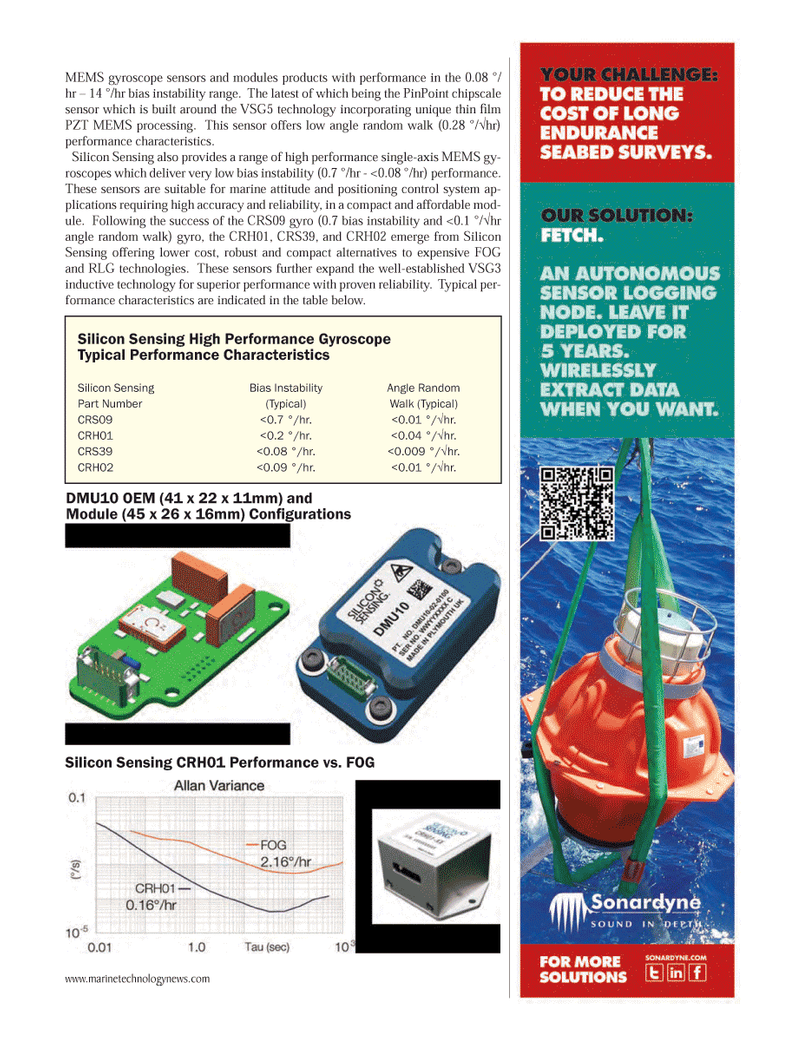
Page 63: of Marine Technology Magazine (September 2014)
Ocean Observation: Gliders, Buoys & Sub-Surface Networks
Read this page in Pdf, Flash or Html5 edition of September 2014 Marine Technology Magazine
MEMS gyroscope sensors and modules products with performance in the 0.08 °/ hr – 14 °/hr bias instability range. The latest of which being the PinPoint chipscale sensor which is built around the VSG5 technology incorporating unique thin fi lm
PZT MEMS processing. This sensor offers low angle random walk (0.28 °/vhr) performance characteristics.
Silicon Sensing also provides a range of high performance single-axis MEMS gy- roscopes which deliver very low bias instability (0.7 °/hr - <0.08 °/hr) performance.
These sensors are suitable for marine attitude and positioning control system ap- plications requiring high accuracy and reliability, in a compact and affordable mod- ule. Following the success of the CRS09 gyro (0.7 bias instability and <0.1 °/vhr angle random walk) gyro, the CRH01, CRS39, and CRH02 emerge from Silicon
Sensing offering lower cost, robust and compact alternatives to expensive FOG and RLG technologies. These sensors further expand the well-established VSG3 inductive technology for superior performance with proven reliability. Typical per- formance characteristics are indicated in the table below.
Silicon Sensing CRH01 Performance vs. FOG
Silicon Sensing High Performance Gyroscope
Typical Performance Characteristics
Silicon Sensing Bias Instability Angle Random
Part Number (Typical) Walk (Typical)
CRS09 <0.7 °/hr. <0.01 °/vhr.
CRH01 <0.2 °/hr. <0.04 °/vhr.
CRS39 <0.08 °/hr. <0.009 °/vhr.
CRH02 <0.09 °/hr. <0.01 °/vhr.
DMU10 OEM (41 x 22 x 11mm) and
Module (45 x 26 x 16mm) Confi gurations www.marinetechnologynews.com
MTR #7 (50-65).indd 63 8/27/2014 10:57:43 AM

 62
62

 64
64
